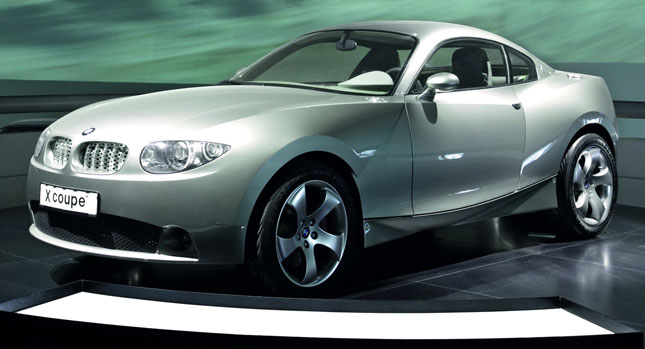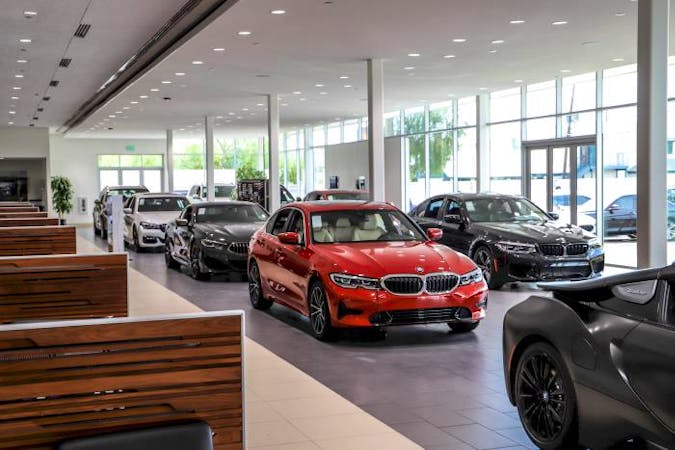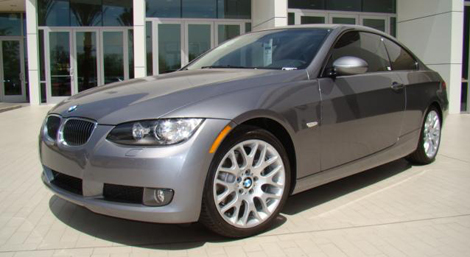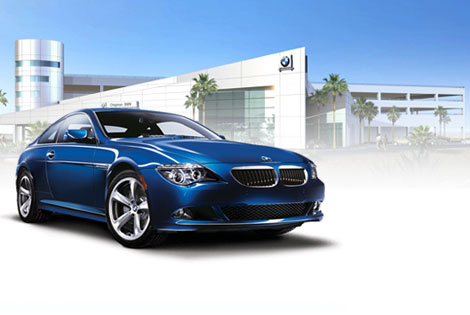Every two weeks, Christopher Chapman makes the rounds at Hyundai's Irvine, Calif., design center to see what his team has in the "corner stack."
The "stack" is a pile of index card-sized sketches on the corner of every designer's desk. For Chapman, Hyundai's U.S. design boss, it's a way to encourage his designers to keep ideas flowing. So when they're not working on a deadline project, they're sketching Hyundai's future.
"It's a designer's duty to be dreaming," says Chapman, 46, a former BMW stylist. "They've got little thumbnails going on all the time of little tiny cars ... and the power of those tiny little sketches is immense. There's such juicy material in that corner stack that we tap into."
Chapman took charge at Hyundai's U.S. design center in January, filling an 11-month leadership vacuum after Phil Zak returned to General Motors. Chapman says Hyundai's willingness to push the envelope attracted him to the Korean automaker after 18 years at BMW.
"Whether you think it's a good design or not, or whether you think it's attractive or not, the amount of sculpture and the dimensional aspect of the Elantra is undeniable," he says. "All I see is a company that's saying, 'Man, we're going for it.'"
The Irvine studio is responsible for the sheet metal on the current mid-sized Sonata and compact Elantra sedans. Those cars, which account for nearly two-thirds of Hyundai division's U.S. sales in 2012, helped put Hyundai on the design map.
But now that Hyundai has made several bold styling statements, Chapman says the company must consolidate its gains. And that means evolving Hyundai's fluidic sculpture design language.
"The drastic change from model to model isn't sustainable as your reputation grows," he says. "It's important for this company to grow, but it's also important to learn the value of evolving an icon vs. changing it every time a new model comes out. And it's doing that."
The next-generation Sonata, Chapman said, is an example of Hyundai evolving or refining a design, instead of inventing something new. The design for the sedan, due out in 2014, is nearly finished and will be recognizable as a Sonata.
"I believe the current-gen Sonata is an icon," he says. "People know that car. What you want to do is get the reaction when the car drives by of, 'Whoa, that's a Sonata--and it's a new one.' Then we've done our job."
Chapman grew up in Pasadena, Calif., a kid obsessed with things in motion, especially airplanes. He sketched old World War II planes with "as many guns as I could possibly fit on them."
After graduating from the Art Center College of Design in Pasadena in 1989, he landed a job at Isuzu's design studio in Cerritos, Calif. At Isuzu, he did the XU-1 concept, a futuristic SUV with gull-wing doors that received wide acclaim at the Tokyo Motor Show in October 1993. Automotive News declared at the time: "If slick concept sport-utilities were the stars of the 1993 Tokyo Motor Show, Isuzu Motors' gull-wing XU-1 was the slickest of them all."
Chapman and his fellow Isuzu designers were on cloud nine after the show, but the feeling was short-lived. Isuzu had already decided to pull the plug on its California studio by the time the XU-1 was under the lights in Tokyo. Chapman was handed his severance papers on Oct. 28, 1993, ironically by the woman he eventually married, Chapman says with a smile.
"I figured, all right, my car career is over," he said.
Chapman applied for a position at Designworks/USA, a California consultancy that handled lots of BMW assignments and is now owned by the German automaker. It turned out to be a great fit.
"I didn't realize this, but they were trying to figure out how to build an SUV at BMW," Chapman said.
The interview went well.
"I remember [Designworks founder] Chuck Pelly saying, 'So you did the [XU-1]?' And I said, 'yeah, but it's a team effort.' I think that one response really rang a bell with them because it's never the efforts of just one person."
The job was his.
Soon, he was working nights sketching ideas for a BMW SUV while helping wind down Isuzu's studio. He met once a week with a BMW vice president on the patio at Jerry's Famous Deli in Marina Del Rey near Los Angeles to talk about what would become the BMW X5.
After joining Designworks, Chapman was sent to Munich for two months working with then-BMW design boss Chris Bangle on full-scale models of the eventual X5. That was five years before the production vehicle debuted at the 1999 Detroit auto show.
Over the next few years, several BMW production vehicles and concepts had Chapman's stamp, such as the X-Coupe concept shown in Detroit in 2001, the CS1 Concept in 2002, and the 1 series that is on the road today.
Most of Chapman's BMW tenure was spent at Designworks in California. He says his experience working outside headquarters taught him the importance of cultivating ideas that differ from those inside. He says that's the reason for having multiple design studios.
"Most of the time you're at the mercy of the decisions made at headquarters," he says. "It's being a flea on the end of a dog's tail. Just once in a while, you can chomp down onto that tail with your teeth and that whole dog will jump to attention."
Chapman says Hyundai's willingness to innovate drew him to the company. Audacious exterior styling is the example at hand, but he's talking about more than sheet metal. Chapman has made optimizing the car's human-machine interface a long-term priority.
The goal is to make hands-free calling, operating the sound system, and even starting the engine more intuitive. He calls each new idea "a little tapas plate."
Chapman says new optical and gesture recognition technology could lead to hands-free operation of the climate control system. By looking at a temperature icon on a head-up display, drivers could activate a motion sensor that would enable them to change the temperature by rotating their hand.
Such a system is years from production, but Chapman says Hyundai has a concept car planned for the Detroit auto show in January that will demonstrate a few of his team's human-machine interface ideas.
"In a lot of respects, the HMI is going to be one of the entry tickets, maybe even surpassing design," he says. "It's going to be such a powerful factor in the purchase decision of the car and it's important that we look at it that way."
Chapman says a generation of car buyers for whom operating an iPad is second nature demands a close look at how people interact with vehicles.
Still, he doesn't want to load Hyundais with every possible gadget, gizmo and high-tech application. He hates the term "infotainment" and reviles the industry's push to get smartphone-style apps in the car, for example.
"There's this rush to throw it all in the car because it exists and because the competition is going to throw it in there," he said. "I think we need to develop our own system ... and sometimes say no."
This content is created and maintained by a third party, and imported onto this page to help users provide their email addresses. You may be able to find more information about this and similar content at piano.io
PreOwned Cars Phoenix AZ Chapman BMW on Camelback Phoenix

Chapman BMW chapmanbmw Twitter

Chapman BMW On Camelback BMW Used Car Dealer Service Center

BMW History Chapman BMW on Camelback

CHAPMAN BMW ON CAMELBACK 15 Photos amp 15 Reviews Car Dealers

Hyundai America Nabs BMW Designer Christopher Chapman Carscoops

Chapman BMW Chandler Home Facebook

New BMW X15 For Sale in Phoenix AZ Chapman BMW Chandler

Chapman BMW On Camelback Employees

Chapman BMW on Camelback reviews Phoenix AZ 15 15 E

Chapman BMW on Camelback Phoenix AZ Cars

Chapman BMW Chandler

Schedule Service Online Chapman BMW Chandler

Chapman BMW Chandler A New and Improved Dealership

Chapman BMW I15